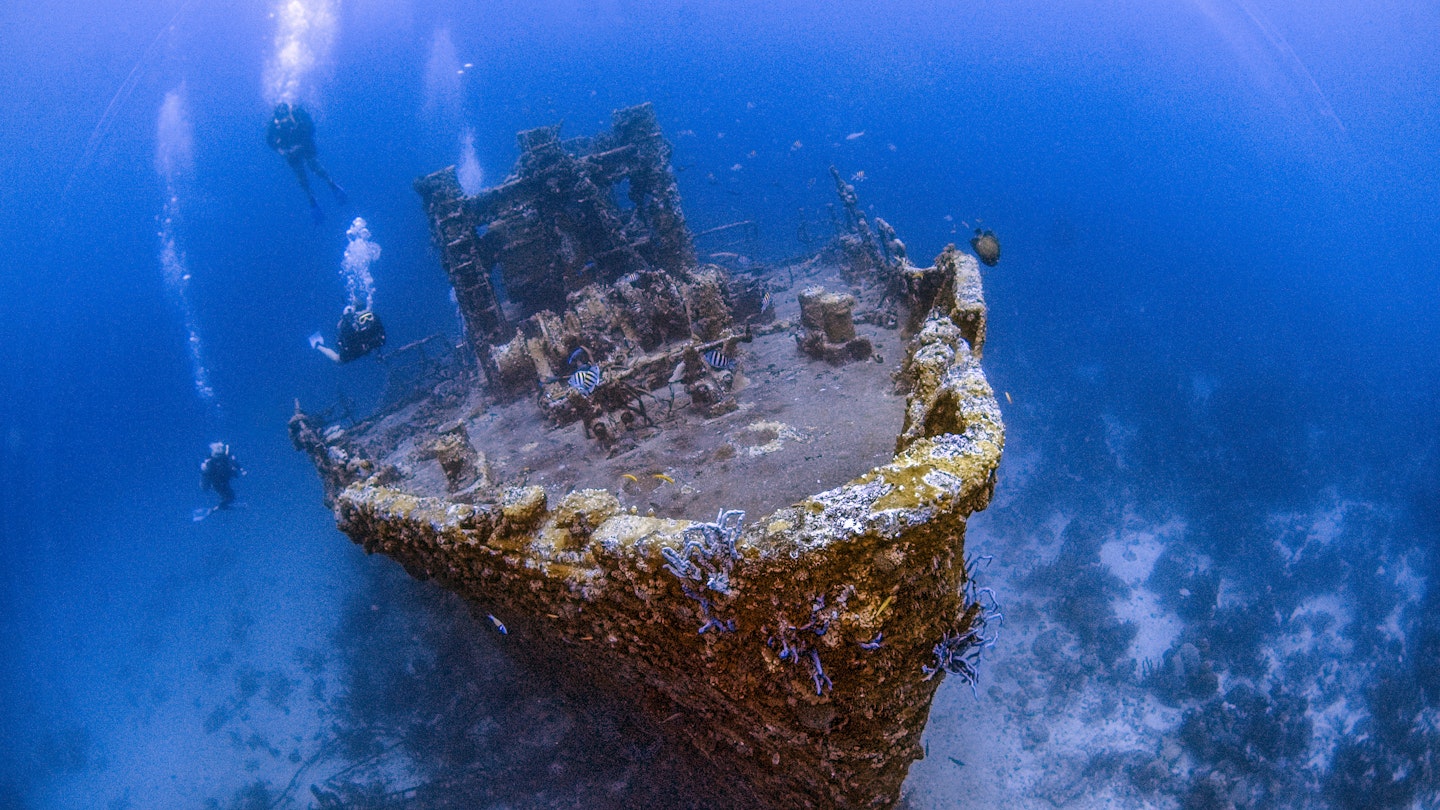Scuba Diving in Aruba, Bonaire, and Curaçao
The southern rim of the Caribbean offers the perfect conditions for taking the plunge.
In and around the Dutch-speaking islands of Aruba, Bonaire, and Curaçao (the ABC Islands), the water temperatures are warm year-round, averaging 85°F (29°C). Moreover, these islands sit south of the hurricane belt, minimizing extreme weather compared to other islands in the region.
Despite their small size, with Curaçao being the largest at just 171 sq miles (443 sq km), each island boasts exciting underwater landscapes off their picturesque coastlines and beneath their turquoise waters.
Whether you’re a long-time diving enthusiast or just starting, understanding the unique diving offerings of each island can greatly enhance your experience.
Scuba Diving in Aruba
Best for exploring shipwrecks, then relaxing on the beach
The Best Time to Go to Aruba
The ideal time to visit Aruba for diving is from April to November, thanks to consistent water conditions, sunny days, and calm winds.
Why Aruba is Perfect for Diving
If exploring shipwrecks is on your wish list, Aruba is the perfect destination. The southwestern and western shores are home to over 10 diveable shipwreck sites. Furthermore, after your dives, Aruba offers a multitude of activities including bustling casinos and leisure attractions.
Top Diving Spots in Aruba
Lying off Aruba’s northern coast, the SS Antilla is the largest shipwreck dive in the Caribbean. The 400-ft (134m) shipwreck is adorned with a vibrant array of sea life.
Additionally, advanced divers might enjoy the wreck of the SS California, an over 100-year-old site featuring stunning coral reefs and diverse fish species.
What You’ll See Diving in Aruba
Among popular dive sites near Aruba is an artificial reef created by sinking an Air Aruba YS-11, attracting giant barracuda. You’ll also find an abundance of natural reefs that host an array of marine life, including stingrays and loggerhead turtles.
Advice for First-Time Travelers to Aruba
An Embarkation and Disembarkation (ED) card is required to enter Aruba, costing $20 as of 2024. Purchasing in advance is advisable for convenience.
Scuba Diving in Bonaire
Best for shore diving and reef conservation efforts
The Best Time to Go to Bonaire
For ideal swimming and turtle spotting, the summer months of May to July are the best, with May and June being less crowded.
Why Bonaire is Perfect for Diving
Bonaire is renowned as the “shore diving capital of the world,” allowing divers easy access to stunning dive sites without the need for a boat. Its western coast is sheltered from strong currents, making it beginner-friendly.
Top Diving Spots in Bonaire
With nearly three-quarters of Bonaire’s 85 dive sites accessible from the shore, divers can explore an array of ecosystems. Lac Bay features rich mangroves while Angel City offers a double reef suitable for divers and snorkelers alike.
What You’ll See Diving in Bonaire
The waters off Bonaire are home to diverse marine life, including numerous species of coral and fish. Keep an eye out for bottlenose dolphins and vibrant reef ecosystems.
Scuba Diving in Curaçao
Best for underwater topography and limestone cliff landscapes
The Best Time to Go to Curaçao
From June to September, Curaçao is ideal for diving, particularly in September and October when coral spawning occurs.
Why Curaçao is Perfect for Diving
Diving opportunities abound across Curaçao, with resorts offering various diving amenities and excursions. The island’s diverse aquatic environments make every dive a unique adventure.
Top Diving Spots in Curaçao
Double Reef is a popular destination that features a delightful pair of reefs, perfect for both shore and boat dives. Moreover, Mushroom Forest near Playa Santa Cruz presents a stunning underwater landscape filled with distinctive coral formations.
What You’ll See Diving in Curaçao
For an extraordinary experience, plan diving excursions during the coral spawning period. Witness a magical underwater spectacle filled with vibrant marine life.
Tips for Sustainable Diving
- Lather up with biodegradable, reef-friendly sunscreen.
- Consult with dive shops on reef health to understand potential issues such as Stony Coral Tissue Loss Disease (SCTLD).
- Practice “Leave No Trace” principles, minimizing plastic waste and avoiding the collection of coral.
- Maintain a safe distance from marine life and avoid touching it.




